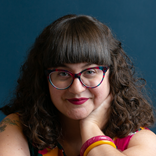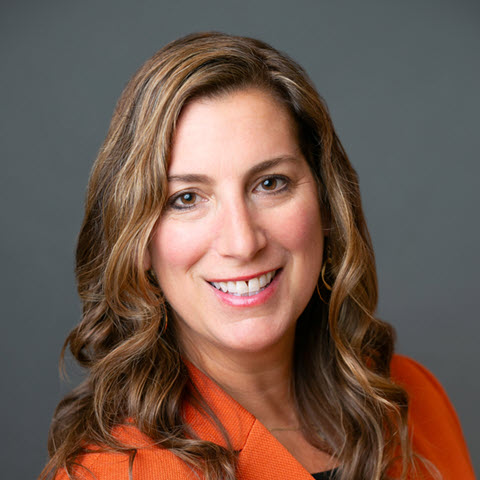As we wrap up 2021 and prepare for an exciting 2022, we felt it was high time to talk about the new E Source as well as our new leader, CEO Ted Schultz. Over the summer, we “E Source names Ted Schultz as CEO”, filling the role previously occupied by the now-retired Wayne Greenberg. With Ted at the helm, we’ve been working hard to bring the capabilities of the expanded E Source together into cohesive solution areas for tackling utilities’ and cities’ most pressing problems.
While delivering remarks during the opening plenary at the E Source Forum 2021, Ted stated, “Never before has it been more important to invest in the infrastructure to help our utility clients deliver what their customers expect, which is clean, safe, reliable, and affordable energy and water.” I recently sat down with Ted to discuss that declaration and ask a few hard-hitting questions to get to the core of who Ted is and what he has in store for our clients.
CEO Ted Schultz introduces the new E Source during the opening plenary of the Forum 2021
Sara Patanaude. Hi Ted! Congratulations on becoming CEO. How have your previous roles prepared you for this one?
Ted Schultz. I started my career in IT for NYSEG and I’ve been working toward a sustainable future since 2006, so I feel that I understand where the industry is going and how we can make a difference. Utilities are key players in addressing climate change and creating a sustainable future. I firmly believe it’s a question of purpose and mission, combined with understanding how capitalism plays into that to make a really dramatic difference.
I had the opportunity to implement some transformational changes while working with Duke Energy. I led the regulated energy services business and was able to secure some breakthrough regulations to recognize energy efficiency as a resource and make it a profitable resource investment for utilities. It resulted in an order of magnitude change in energy efficiency investment.
After leaving Duke Energy, I spent several years running smaller businesses that serve utilities. I ran the utility practice for Ecova, which grew and was successful enough to be acquired by ENGIE. From there I was recruited to be CEO of a startup, TROVE Predictive Data Science, which I knew would be the next big thing in the industry as it was at the center of the technology paradigm shift to data-driven decision making. Startups aren’t for the faint of heart, but we managed to pivot, survive, and grow and built a great business that hit the market well and, ultimately, led me here to E Source.
I have the scars of experience to be prepared for this role and, I think, as a company, we’re positioned well and have the right teams in place to make a significant difference in the world.
SP. What are the biggest challenges you foresee the utility industry facing in the next few years?
TS. Sustainability is critical right now, and everyone has a plan to be carbon neutral sometime between 2030 and 2050, but I haven’t seen anyone with a plan that fully accomplishes that yet. There’s a gap in every plan, therefore it’s a big challenge. The challenges around reliability, resiliency, and safety are bigger than ever. There are a lot of investments taking place across electric, gas, and water to improve delivery systems while also being under a tremendous amount of pressure from regulators or policymakers to keep utilities affordable, which results in cost-cutting around operations and maintenance expenses. How do you collectively solve for that?
The other big issue on the table, coming out of the COVID pandemic, is customer equity. Some groups–low- and moderate-income (LMI) customers and small and midsize businesses–were hit particularly hard. I think everyone is trying to figure out how to better support them today. Quite frankly, this is long overdue and I am excited for us to be working with leading utilities to find solutions that make a difference.
Meanwhile, we’re also in the middle of a technology paradigm shift around data-driven decision-making. Typically, these shifts last about 15 years and I’d say we’re about halfway through this one. We’re now getting out of the hype and what you’d call the “trough of disillusionment” and finally getting into delivering real value. The only way, in my mind, to effectively solve the challenges above is to become a data-driven decision-maker with really strong decision support systems. E Source will remain a strong partner for utilities in this space. Our team is unique in its approach to making data useful and really delivering value to clients.
SP. What’s at the top of your list of priorities for E Source?
TS. Our team will be focused on Powering What’s Next by providing our industry expertise and thought leadership using “how might we” thinking. We’ll rally around value-driven solutions configured to help our clients with their most pressing challenges.
One example of this is how we’re collaborating with the Edison Electric Institute to help utilities better understand and serve LMI customers. The traditional one-size-fits-all approach doesn’t serve this particular customer group nor the utility well. The ultimate desired outcome of this project is to create energy sustainability for LMI customers through programs to better afford, manage, and pay their energy bills.
We’re deploying a two-pronged solution that includes data science to cluster LMI customers into micro cohorts that have similar characteristics relative to energy sustainability. We’ll then use empathy-based ethnographic research to humanize targeted micro cohorts to capture a much deeper understanding of their approach to energy sustainability. The combination of unique data attributes that define the micro cohorts combined with the primary ethnographic research is the basis for a design thinking workshop to rethink how utilities serve the micro cohort and implement the results.
This is an example of how we bring the capabilities of E Source together to provide solutions with measurable value. We have structured our solutions to move at a pace we think is required to tackle the big challenges utilities are facing. We call this concept “speed to value.” We have to tackle the big questions: Where do I find the carbon reductions to meet the big goals for 2030, which isn’t very far away? How do I handle water loss? How do I address gas constraints? How do I improve my customers’ experience while also cutting operating costs? Simultaneously, the reliability of the grid is being challenged in a big way. Just this year, we’ve been tested with wildfires, record high temperatures, a Texas freeze, cyberattacks, and floods. We need to move at a more rapid pace and E Source will be poised to offer utilities solutions to do just that.
SP. What are some of your plans to get to know our members better?
TS. I like to get out and meet clients as much as possible. The E Source Forum this year was a great opportunity to meet with clients in person as well as virtually. I also loved participating in the Customer Energy Solutions Leadership Council. Now that travel is coming back, I plan to be out and about quite a lot with our teams to hear directly from our members. Let’s put it this way: I’ll never refuse an invitation to meet with clients, so I expect to do a lot of that moving forward.
SP. E Source likes to have fun. What do you enjoy doing when you’re not in the office?
TS. I like to stay active and outdoors as much as possible. I play tennis quite a bit and enjoy biking and working out. I also recently started playing pickleball. I also like to go boating and spend time on Lake Norman in North Carolina, where my wife and I built a pretty cool net-zero home. Most of all, I appreciate and enjoy any time I get to spend with my two daughters. Now that they’re grown, time with them is limited, so whatever time I get with them is special.
SP. What was the worst job you ever had?
TS. I come from humble means, so any job I’ve had was great and I’ve never been resentful of any job. However, you could say my dirtiest job was probably working for the city where I grew up. I had the pleasure of working on the back of a garbage truck. We affectionately referred to it as the lunch truck—all you can eat, anytime! One particularly memorable day was having to climb down into a sewer to clean it out. This sewer didn’t have a ladder, so I had to climb down and up the hose of the machine used to clean it to get in and out. After I finished the job and finally got out from the sewer, covered in unpleasant things, the other guys pulled out a sprayer and doused me until I was clean enough to get back on the truck. They got me pretty good.
SP. Finally—and maybe the most importantly—if you were a sandwich, what kind would you be?
TS. The best sandwich in the world is a true Thanksgiving sandwich. But it has to be made with stuffing and real turkey, not the deli kind. Maybe with some pickles, lettuce, tomato—all the good stuff. But it’s definitely got to have the real stuff. It has to be the real deal.


